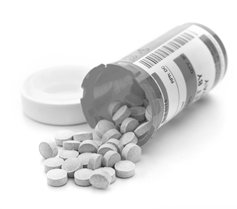How Narconon is Different from a Program Offering Buprenorphine

Medical doctors and pharmaceutical companies have been searching for addiction’s “silver bullet” for decades—if they could find a pill that successfully treated addiction, they would instantly have 22 million new customers for their drug.
They thought they had it with methadone, but then methadone proved to have very serious drawbacks. For one thing, it was so prone to abuse that to receive a dose of methadone, a person being treated had to show up at the clinic every day. They could not be trusted to take home even one additional dose. Second, it was implicated in many overdose deaths by people abusing it and people being treated with it, like Anna Nicole Smith. For both Anna Nicole and her son who died shortly before her, methadone was involved in the death. Third, it was said to provide a euphoric “buzz” for those in treatment which was contrary to the point of getting opiate addicts off heroin, morphine, opium or synthetic opiates.
Ref: LA Times: Methadone
So pharmaceutical companies continued their Research and Development. In 2002, the FDA approved a new drug for the treatment of opiate addiction: buprenorphine. It was a synthetic opioid that was stated to create less euphoria and intoxication than heroin or prescription opioids that were abused, such as OxyContin or Vicodin. It could be administered by private physicians on an out-patient basis. Patients could take the prescription home and not need to report to the clinic each day. Buprenorphine was sold as a sole ingredient under the trade name Subutex and also combined with naloxone, a second drug intended to counter the intoxicating effects of opiates so that anyone trying to continue to abuse heroin or other drugs (including those injecting buprenorphine) would not feel the “desirable” effects. In this combination, the drug was called Suboxone.
After usage spread throughout the US, buprenorphine began to be used in the European Union after its approval for marketing in 2006. In France, buprenorphine is being used for addiction treatment for 30,000 people.
Ref: Opioid Use in Europe
Long-Term Dependence on Buprenorphine
The original idea in the marketing materials for buprenorphine was that your doctor would give you this medication in his office and then you would not go through withdrawal symptoms when you stopped using heroin or other opioids. Then your doctor could gradually wean you off this drug and you would be clean without having to suffer from withdrawal. It’s a pretty picture but does not seem to be what is happening.
For one thing, there are the common side effects:
- Chills
- Constipation
- Diarrhea
- Dizziness
- Drowsiness
- Flushing
- Headache
- Nausea
- Sleeplessness
- Stomach pain
- Sweating
- Vomiting
- Weakness

And the less common side effects: Severe allergic reactions (rash; hives; itching; difficulty breathing; tightness in the chest; swelling of the mouth, face, lips, or tongue); anxiety or nervousness; blurred vision; confusion; decreased attention; fainting; irregular heartbeat; loss of appetite; loss of coordination; mental or mood changes (eg, depression); persistent trouble sleeping; severe or persistent dizziness or drowsiness; severe or persistent stomach pain or constipation; slow or shallow breathing; slowed reflexes; slurred speech; swelling of the hands, ankles, or feet; yellowing of the eyes or skin.
Ref: Buprenorphine side effects
Then there is the duration of treatment and the success after a person stops using buprenorphine. According to a 2010 report, a review of people being treated with buprenorphine after dependence on prescription opioids showed that when they were tapered off buprenorphine after nine months on the drug, nearly every one of them relapsed. That’s a very long time on a substitute drug without recovery occurring.
Ref: Samsha report: Buprenorphine
And then there is the abuse. According to the Substance Abuse and Mental Health Services Administration, buprenorphine is being abused by crushing the tablets and injecting the material. When injected, addicts describe the effects as being “similar to equipotent doses of morphine or heroin.” It turns out that nalaxone that is not particularly effective at blocking intoxicating effects when the dosage being abused is high. In recent years, Suboxone has become a popular drug to purchase on the street, many using it to supplement other opioid abuse.
Ref: Samsha: Buprenorphine Overview
While buprenorphine is described as being safer than methadone or illicit opiates, one study listed 43 deaths in the UK between 1999 and 2002, some of which involved the concurrent use of benzodiazepines and seven of which involved buprenorphine alone. The authors of the study commented that the result of this study “raises questions about claims of buprenorphine’s high safety profile.”
How Does Narconon Address Addiction?
Fifty years of experience has taught Narconon staff that addiction can be overcome. The special techniques used by Narconon to make withdrawal tolerable show that this does not have to be the dreadful barrier to recovery that anyone who has gone off drugs “cold turkey” thinks it will be.

The Narconon drug and alcohol rehabilitation program addresses each major component of addiction and remedies it with innovative methods that have been proven effective over decades of use. Through the use of nutrition, one-on-one counseling with the Narconon staff, life skills training and a thorough detoxification step that alleviates drug cravings, addiction can be left behind in favor of a productive, sober life. And it does not have to take years; most people complete this program and go home drug-free in eight to ten weeks.
Since no substitute drugs are used in the Narconon program and thousands of success stories attest to the success of this drug-free method, it seems the best options for drug recovery do not need to include buprenorphine.